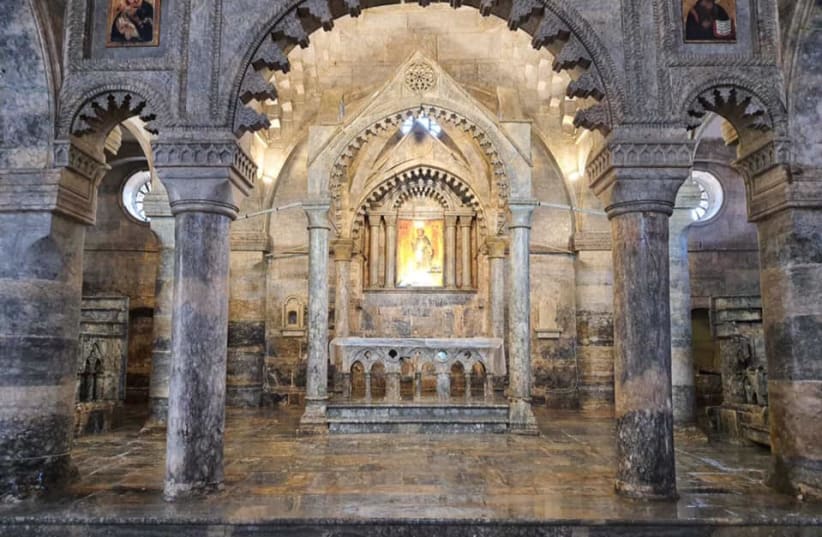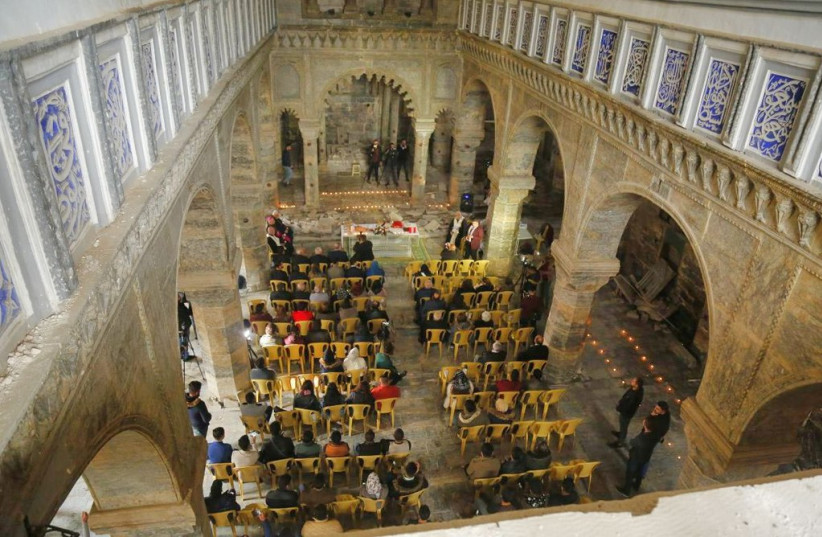Laborers doing restoration work at the historic Syriac Orthodox Mar Thomas Church in Mosul which was severely damaged by ISIS, have uncovered some one dozen ancient relics and parchments belonging to several saints.
According to a report in PIME AsiaNews, a news agency of the Catholic Pontifical Institute for Foreign Missions, six stone containers with Aramaic inscriptions of saints and several manuscripts in Syriac and Aramaic languages were found.
One of the stone containers bore an inscription relating to Saint Theodore, a Roman soldier born in the province of Corum, Turkey in the 3rd century CE and beheaded for having converted, said the news report.
Other reliquaries – containers for holy relics – discovered were connected to Saint Simon ‘the Zealot,’ a first-century apostle of Jesus; Mor Gabriel, bishop of the Tur Abdin hilly region situated in southeast Turkey from 593 to 668 CE; relics of Saint Simeon the Wise from the 1st century CE, who, according to Christian tradition, welcomed the infant Jesus in the Jewish Temple of Jerusalem; relics of Saint John, one of the first apostles of Jesus, also known by his Hebrew name Yohanan ben Zavdi, and relics of celebrated writer and Syrian Orthodox Regional Primate Saint Gregory Bar Hebraeus, who served in the position from 1264-1286 CE.
Parchments written in Syriac, Armenian and Arabic, wrapped and protected in glass bottles, were also discovered in the ruins of the church, said the AsiaNews report.
It is unclear where in the church the reliquaries and parchments were found or who hid them in the church, though it is possible that before they fled priests from the church hid the relics to protect them from destruction by ISIS which throughout its hold in Iraq and Syria destroyed countless precious cultural heritage and archaeological sites, Muslim and Christian places of worships, and smashed priceless antiquities in museums.
Like the city where it is located, Mar Thomas Church has seen its share of war and destruction.
Thought to date back to the 7th century CE and built on the site where according to Christian tradition the house of Jesus’ Apostle Thomas lived during his stay in Mosul, the original church was first damaged in the 18th century Persian siege of Mosul – then part of the Ottoman Empire – in 1743.
A peace treaty between the Ottoman Empire and their Persian rivals eventually ended the siege. But two years later the two faced off a final time in the 10-day Battle of Kars – which included a battle near Mosul – after the Ottoman sultan broke the terms of the agreement. This resulted in the complete thrashing of the Ottoman army, with thousands of soldiers wounded and dead.
The current church structure was rebuilt by the 18th century government of Mosul as a sign of gratitude to the Christians who helped defend the city. The church was in use until 2014, when ISIS occupied the city and vandalized it. It was subsequently severely damaged during the battle of Mosul in 2016-2017.
Starting in 2021 a one-year, $328,000 restoration project began at the church through the Geneva-based International alliance for the protection of heritage in conflict areas (ALIPH) in collaboration with the Iraqi State Board of Antiquities and Heritage (SBAH).
LOOTED ANTIQUITIES
In a June 1 press release ALIPH announced that their Scientific Committee Chair Jean-Luc Martinez, who is also the former director of the Louvre Museum in Paris, was taking a leave of absence from the foundation “pending clarification of his legal proceedings” after being implicated in an international investigation of $56 million in sales of allegedly looted antiquities to the Louvre Abu Dhabi and the Metropolitan Museum of Art.
According to RFI, a multi-language French news and current affairs public radio station, Martinez has been charged along with two other prominent French Egyptologists with “complicity in fraud and concealing the origin of criminally obtained works” specifically in relations to a rare pink granite stele depicting the pharaoh Tutankhamun and a gilded coffin of an Egyptian priest.
RFI noted that the French investigators suspect that hundreds of artifacts were pillaged during the “Arab Spring” protests in several Middle Eastern countries a decade ago, and then were sold to galleries and museums which turned a blind eye regarding issues of previous ownership.

